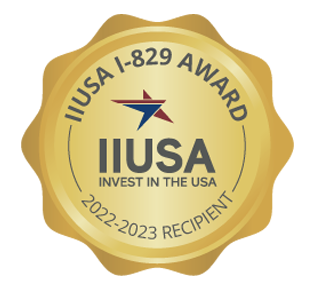The U.S. Congress created the EB-5 visa program to attract foreign direct investment from high-net-worth individuals (HNIs) who wish to make an investment in the United States to attain U.S. permanent residence. In order to qualify for the EB-5 visa, the EB-5 investors need to invest the qualifying amount. When the program was introduced, the minimum investment amount for an EB-5 investment was $1,000,000. However, if a project was located in a designated Targeted Employment Area (or also known as TEA), the minimum investment amount was reduced to $800,000 to attract investments in these economically depressed regions and generate employment.
What is a Targeted Employment Area (TEA)?
A Targeted Employment Area (TEA) is an area that the U.S. Congress has identified that is in need of job creation and economic stimulation. There are two ways to receive TEA designation: rural and high unemployment. To qualify as a rural TEA, areas must have less than 20,000 inhabitants and cannot be within nor border a metropolitan area of more than 20,000 people. In contrast, high unemployment TEAs are within a metropolitan area and must have an unemployment rate of at least 150% the national average. High unemployment TEAs are more common for new development projects.
From the start of the program, state governments had the power to designate Targeted Employment Areas (TEAs) based on the application of EB-5 investors or a regional center. In November 2019, the Department Homeland Security (DHS) issued notification that required areas to be designated by the U.S. Citizenship and Immigration Services (USCIS). However, this was successfully challenged in the federal court and with the June 2021 Behring Co. ruling, state governments now designate TEA areas as they did prior to the November 2019 updates.
Why does a TEA Matter?
TEAs are an excellent way for potential EB-5 investors to gain permanent residency at a lower price threshold. Through your $800,000 investment, qualified EB-5 projects located in a TEA help stimulate the economy through job creation and discretionary spending.
Process for State TEA Designation
Prior to the Behring Co. ruling in June 2021, from November 2019 onwards, TEAs were designated by the DHS. You would submit an economist letter to the USCIS detailing that the census tract where the project is located qualifies based on data provided by the U.S. Census Bureau and U.S. Bureau of Labor Statistics.
However, the Behring Co. ruling reverted TEA designation power back to the state governments. Similar to receiving a designation from the DHS, you will use a TEA map to determine the applicable census tracts for your development project. This, along with a letter from a local economic group demonstrating support, will be sent to the applicable state government. Should your TEA application be approved, you will receive a letter from the state government, which is valid for one year.
- Connect census tracts (can be up to 12 contiguous tracts, especially in California)
- TEA maps
- Help you determine which census tracts
- Can get more projects approved because you can utilize high unemployment areas outside of the area that you are looking to develop in
- Help you determine which census tracts
- Send information to local economic group
- Write a letter to the state that demonstrates local support
- Census share method will calculate unemployment
- Submit letter and data to the state government
- If approved, you will get a letter from the state government, which is valid for a year
For more information on GGG and EB-5, please follow us on YouTube, Twitter, Facebook, LinkedIn and Instagram.


